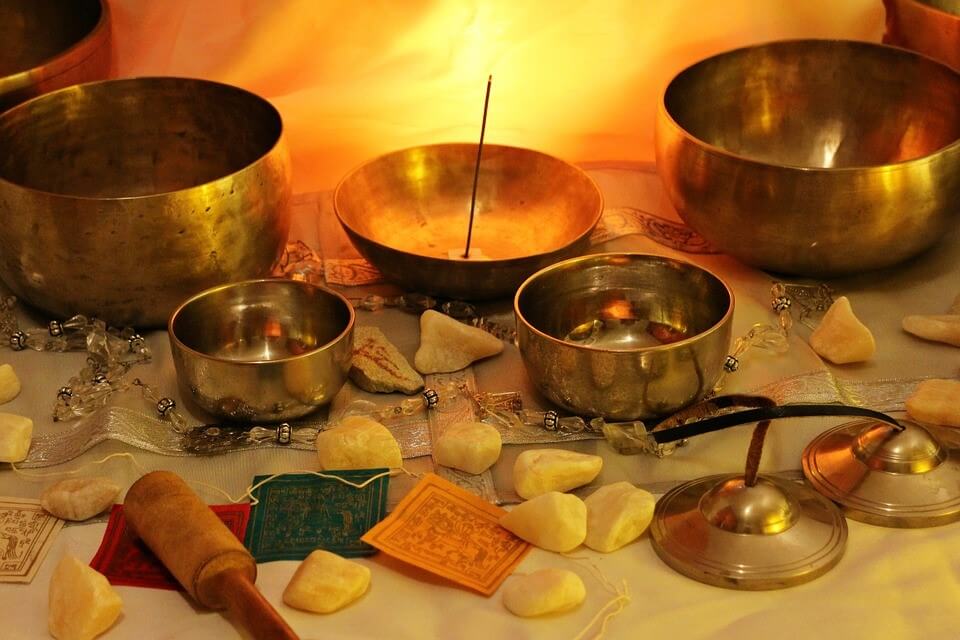Cure Disease
When we hear the words such as ‘diseases’ chill most likely run down our spine more so to think we are the infected. The desire for most of us, is to live healthy lives throughout our lifetime. Well what do the adage say in regard to this? If wishes were horses… I will let you fill in the missing words there.
Well, what am I trying to say is that though we would never wish for it, we sometimes find ourselves suffering from a disease. At times, two disease may attack your feeble bodies at the same time. Your body is not feeble? Well, I have news for you, ‘not only the feeble suffer from diseases. Even the strong and mighty fall ill at times.’
But you do not want to get ill. What can you do about it? Or is it something that cannot be avoided? The answer is no.
There is a variety of preventive medication as well as diets that are in order to keep the diseases at bay. Of prime importance is watching your diet. Ensure each meal you take is a balanced diet more so high in vitamins which helps prevent diseases.
Some diseases or conditions are associated with pain that is too intense for the patient to just withstand. The extent of the pain being experienced differs according to the condition or disease the person is suffering from. In view of this, we managed to arrange the diseases and conditions in order of the intensity of pain they cause to the patient. Here is the arrangement in order from the most painful condition;
- Cluster Headaches
- Complex Regional Pain Syndrome
- Interstitial Cystitis
- Trigeminal Neuralgia
- Post herpetic Neuralgia
- Cancer Pain
- Peripheral Neuropathy
- Chronic Lower-Back Pain
- Kidney Stones
- Post-Surgical Pain
Take my word that both the patient experiencing cluster headache and the one who is experiencing post-surgical pain or even a condition that cannot make it to the ‘top 10 most painful conditions,’ all claim they are experiencing the worst. No condition is preferable over the other.
Difference between Chronic Pain and Acute Pain
Am convinced you already noticed the condition bearing the prefix ‘chronic.’ Hey, check back. Noticed the condition in 8th place? The prefix more particularly? What really does it imply? What if it was replaced by the term ‘acute’? Would it suggest something different? All these questions we are going answer by the end of this article.
Chronic Pain
This type of pain is usually described as pain that affects the patient for a period exceeding 3 months. This type of pain may be;
- Hardly inconveniencing or completely uncomfortable
- occasional or continuous
- mild or very extreme
The signals of such pain are left still active in your nervous system long after recovery. They may remain active for up to a year if not several months. It is this particular aspect of chronic pain that cause a lot of adverse emotional and physical effects on the patient.
Acute Pain
Typically a pain that is acute is exhibited by the patient for a period of 6 months or even less. In most cases, it is normally associated with soft damaged tissue as is the case when you sprain your ankle. This type of pain usually wears out as the damaged tissue gradually heals.
Chronic Pain Versus Acute Pain
The life we are living is full of pain. Am sure you are nodding in agreement to that. Well, it may or may not be that type of pain that you are having in mind that we are talking about. Let us say your girlfriend broke up with you yester night, you are probably experiencing pain. Right?
That is not the pain we are discussing, at least not in this particular article. We are more into pain on body tissue.
Let us look at the difference in the earlier mentioned types of pain; acute and chronic pain.
Explanation of the Difference between Acute Pain and Chronic Pain to Patients
Acute pain is the type of pain commonly experienced when you hurt yourself. When experience an accident such as hitting your thumb with a hummer or tripping your little toe on a raised floor, you experience pain to the particular affected body part.
Am convinced that most of us would relate to the latter accident and how devastating it leaves you. Most would say the pain is felt from the toe through the whole body to the top of the head. These particular types of pain, though you would find it hard to agree with me, serve to protect us.
But how? This is how. Say you do not experience any pain. What is to make you react when one of your limb is forced to bend in a way it is not supposed to? Your arm may be broken when you are even not aware. Funny but I bet you had never thought of it that way. All you do is to curse the pain.
When the body is subject to hostile environments it responds by movement away to prevent harm. This type of pain that is experienced suddenly and soon wears out as soon as the stimuli is avoided is referred to as acute pain. It does not last for a long time.
When we turn our eye to chronic pain, we realize that it is a whole lot different from acute pain. The pain in itself here becomes a disease and persists long after the injury.
How to distinguish between chronic and acute pain
In cases of chronic pain, it may last for periods that extend to up to a year or longer. After experiencing a pain for approximately 5 months, it may be diagnosed as either chronic or acute. The distinguishing of these two types of pains is further made difficult by the fact that chronic pain is also occasional.
Chronic pain affects your nervous system in such a way that it may be made more sensitive to pain. Little pain such as a light pinch on the skin is made very excruciating. The pain is experienced for longer time after the person who had pinched you releases the pinch.
5 Tips to Reduce Your Chronic Pain
Life has a way of forcing things on us contrary to what we would expect or wish for. What then do we do when life throws these things at us? Do we give in? My answer, NO. We should never give up. In fact the mere thought of giving up should be permanently deleted from our minds. Instead we should develop coping mechanism to handle every situation life throws at us. Be they medical, financial or social conditions.
It is within us to find a way to cope with every condition we come across. We are adaptors to our environments ‘situations’ says the archeologists. For keeping chronic pain at bay, the following tips are in order:
- Learn how to meditate and take deep breathes to help in relaxing
When your body is relaxed, the pain it experiences is eased. Relaxation is achieved when you focus on your breathing and clear your thoughts. Repetition of a word or phrase further enhances the relaxation.
Deep breathing is in itself a technique that is useful in relaxing the body. A quiet place is ideal for this as you attain a body position that is most comfortable.
Concentrate on your breathing trying to let the air to flow deep down into your abdomen then releasing it back out through the nose.
- Reduce intake of alcoholic drinks
Am sure the small knowledge you have on alcohol, is enough to let you know that alcohol worsens sleeping disorders. The pain experienced from the chronic pain is in itself enough to cause you sleepless nights. Avoiding alcohol when you are experiencing chronic pain helps in improving the quality of your sleep-life.
- Do not smoke
Aside from smoking increasing the risk of cancer and heart complications, it also worsens painful circulation disorders.
- Do not stress yourself with other life’s problems
As the sub-title states, the problems are ‘life’s’. Do not stress yourself over them. Life will most certainly take care of them. Stress increases the intensity of chronic pain. This is because such a negative feeling increases the body’s pain sensitivity.
Learn how to control your stress level and you surely will avoid a lot of pain associated with the stress. Engage in something that cools your mind, makes you happy and engage your whole body.
At this point I repeat, ‘alcohol will not help reduce your stress. It only worsens your situation.’
- Get massage to relive the chronic pain
A nice massage not only relieves tension to your muscles but also reduces stress. Most people that are living with chronic pain opt for regular massage sessions which are ideal for their conditions.
Cure for Chronic Diseases
Let us start by first of all defining what a chronic disease is. By the term ‘chronic’, we refer to a classification of diseases that tend to persist for long periods similar to chronic pain. These type of diseases compromises the quality of your life and their effects may be further reflected on the economic aspect.
These diseases which are referred to as chronic are leading when it comes to mortality rate of diseases in the world. Among the population affected by chronic diseases, majority of them are below 70 years of age.
Examples of chronic diseases
- Diabetes
- Cancer
- Musculoskeletal conditions
Treatment
The majority of people who live with chronic diseases are advised to change their lifestyles as a mechanism for coping with chronic diseases. Additionally, medications are usually prescribed. In some instances, an individual may exhibit more than a single chronic disease at the same time.
In such instances, the patient is prescribed more than a single medication for the different conditions. The side effects of each medication are distinct and they may also interact rendering one medication ineffective whereas the other is over active. As mentioned, different chronic diseases have different medication and as such different associated side effects.
Common side effects to some chronic diseases’ medication
- Diabetes: nausea, abnormal functioning of the liver, diarrhea, flatulence, muscular weakness, hypoglycemia and skin reaction to sunlight.
- Heart disease: liver malfunction, problems in metabolism of glucose, muscle toxicity, hacking cough, dizziness and gout
- Cancer: hair loss, skin becomes easily ruptured, nausea, diarrhea and vomiting.
Also important for you to note is that whereas different medication for different conditions have different side effects, two different medications for the same condition may also have different side effects.
Progress of Chronic Pain in the Patient
Chronic pain causes a very big impact on the affected person’s life. Not only does it affect you physical but also psychologically. Knowing the different stages of grief is important in order to stabilize your response to the painful condition you are subjected to.
Seven Psychological Development Stages of Chronic Pain
- Denial
In this particular stage, you experience shock and refusal. Your mind becomes occupied wondering what next. Will life as you know it changes? How will you live with the pain?
This stage is dangerous since most people experiencing chronic pain do not accept they have the condition. As a result, they may not go out to seek treatment for the condition.
- Bargaining and desperation
At this stage, you see fault in yourselves. You practically start ‘bargaining’ with the pain. You would do just anything to have the pain go away. You are willing to go back on time to correct things you did or did not do in the past.
- Anger
Anger sets in once you realize nothing can be done to change the diagnosis made. Anger is however very important in the healing process. When you let it out, it will soon subside and as a result, you heal more.
Later on when the pain progresses, anger is experienced and it may prevent us from participating in activities we otherwise enjoyed.
- Depression and anxiety
First and foremost, you have to know that depression is not in any way a sign of mental illness. It is a feeling of deep emptiness accompanied with grief.
Often patients may tend to separate themselves from other people and may at times wonder if there is reason to continue living. Being diagnosed with chronic pain is like experiencing a huge loss in your life and may result in anxious feelings. Questions such as ‘What next?’ run through your mind.
- Confusion
Imagine getting out of bed one morning to realize that your life has changed. You may lack meaning to your new life. This feeling is commonly associated with depression and anxiety.
- Re-examining your life
When you are diagnosed with a chronic condition, it mostly implies that you have to shift from some, if not most of your previous habits. We are forced to look back on our roles to the society.
The re-evaluation of your life’s targets and goals is a key step in acceptance of your condition.
- Acceptance
Ever come across the phrase, ‘if you cannot beat them join them’? Well, in this case, the ‘them’ in the phrase is replaced with ‘it’, the condition. In this stage, you accept the reality as it is though we would never have wanted to earlier. With time you learn to live with the condition.
What Causes Chronic Pain?
The root of most chronic pain is usually an injury. Chronic pain develops on damaging of nerve cells. Treatment of the underlying injury may not solve this. It is accompanied by intense painful feelings that are long lasting.
However, some chronic pain set in without prior injury. It becomes a challenge to identify the cause of such chronic pain. To shed some light in the latter cases of chronic pain, we established that these underlying health conditions may trigger the pain.
- Endometriosis: a painful condition occurring when there is the growth of the uterine lining outside the uterus.
- Interstitial cystitis: pressure and pain to the bladder
- Fibromyalgia: pain experienced widely in the muscles and bones
- Vulvodynia: pain occurring at the vulva without any obvious cause
Risk factors of chronic pain
This condition affects people in all age brackets but it is most common in adults. Major risk factors include;
- Gender-mostly affects females
- Presence of injury
- Obesity
- Surgical operations
Different Types of Chronic Pain
Chronic pain can be divided into two broad categories are;
- Neuropathic pain: this type of pain occurs where the nerves are damaged.
- Nociceptive pain: nociceptors are found in the nervous system and transmit signals of pain to the brain. They are activated upon experiencing an injury. In this type of pain, the nociceptors malfunction, therefore, sending continuous pain messages even after recovery from the injury is made.
Nociceptive pain may be further classified into two;
- Visceral pain: this type of pain originates from major internal body organs. However, not all organs may cause this pain. It is only the internal organs that have nociceptors that can lead to deep visceral pain on damage.
- Somatic pain: this type of pain is commonly associated with joint injury. It is pain that originates from injury on the outer body. Somatic pain comes from parts such as tendons, ligaments and the skin.
Pain to the muscles is also a form of somatic pain and may develop from chronic conditions such as fibromyalgia.











What a useful post to read. I learned the difference between acute pain and chronic pain and how to get rid of it. Thank you for sharing this helpful article.
One of my family members experience serious health issues and this article helped me to understand what is going on in fact. Thank you, I can now really help him.
A very thorough post. Thank you for your patience and explanations, especially that between acute and chronic pain. At least now I know how to explain myself to my doctor. I will listen to your advice; maybe losing weight will help.
It is so much intelligence protrayed through this guide. The author created a system that provides answers in a nice and holistic manner. I am happy i bought it because it has had a lot of impact.